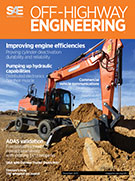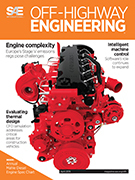Magazine

SEP 2012 AUTOMOTIVE DESIGN
2012-09-25
Walking the torque A system that fills in the torque gap of a turbocharged diesel engine, allowing a smaller power unit to punch well above its size, without the dreaded 'lag'-that has to be a winner, surely. So a decade later, why has it yet to come to market? Ian Adcock ponders the reasons Tipping the scales The original Range Rover revolutionised the automotive industry when it was launched. Some 42 years later, the latest version looks very much set to do the same as Ian Adcock reports Can computers take control safely? In the name of improved safety, some favour a future where automation takes charge of a fast-moving vehicle. The more cautious support advanced systems that simply warn drivers of potential problems. Who will win out? Chris Edwards reports



















